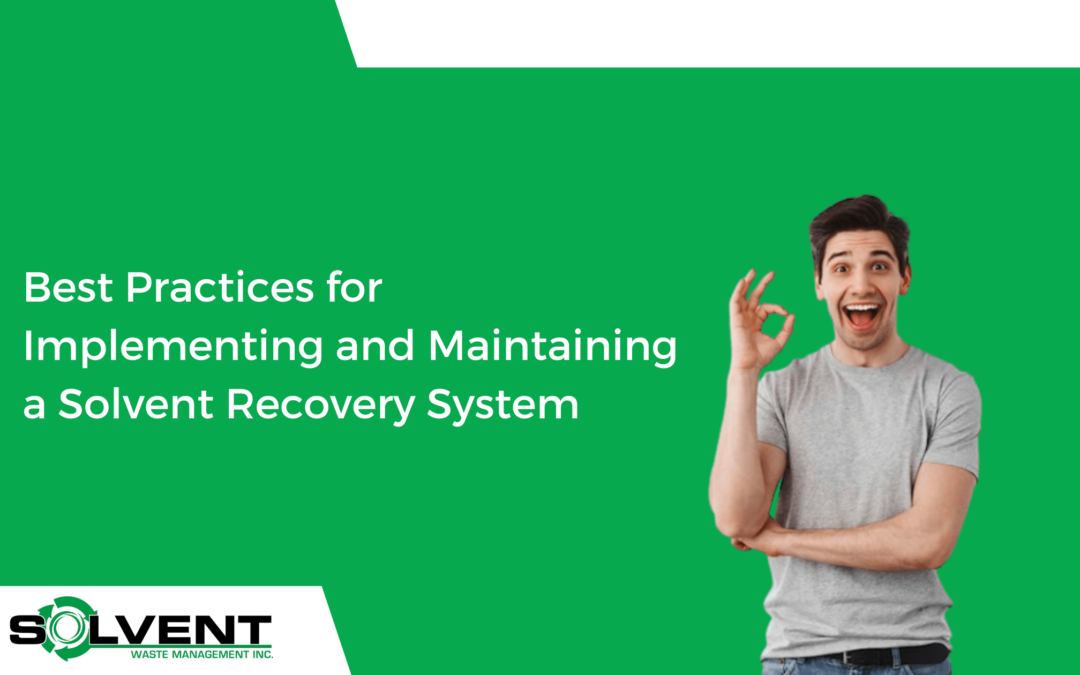In today’s industrial landscape, a responsible and efficient management of resources has become more critical than ever. Solvent recovery is a prime example of a sustainable practice that not only reduces waste but also saves money. Whether you’re in the pharmaceutical, chemical, or manufacturing industry, implementing a solvent recovery system can yield significant benefits. However, to make the most of this process, it’s essential to follow best practices for implementation and maintenance.
Here are some points to be considered:
Assess Your Solvent Needs and Usage
Before diving into the world of solvent recovery, it’s crucial to understand your solvent needs and usage patterns. Conduct a thorough assessment of the solvents your operations require and how they are used. This assessment should include factors such as solvent types, quantities used, and the specific applications in which they are employed.
By gaining a comprehensive understanding of your solvent usage, you can make informed decisions about the type and scale of the solvent recovery system you need. This initial assessment sets the stage for an effective implementation process.
Choose the Right Solvent Recovery System
Selecting the appropriate solvent recovery system is a critical step in establishing a robust Solvent Recovery Process. There are various types of systems available, including distillation, adsorption, and membrane-based systems. The choice depends on your specific requirements, such as the types of solvents used, the volume of solvent to be recovered, and the desired level of purity.
Consider factors like energy efficiency, ease of operation, and maintenance requirements when choosing a system. Collaborating with solvent recovery system experts can help you make an informed decision that aligns with your goals and resources.
Ensure Proper Installation and Setup
Once you’ve chosen the right solvent recovery system, it’s crucial to ensure its proper installation and setup. Even the most advanced systems can underperform if not installed correctly. Work closely with the system manufacturer or a qualified technician to set up the equipment according to the manufacturer’s specifications.
Verify that the system is integrated seamlessly into your existing operations. Ensure that all safety measures are in place and that your staff is trained in operating the system safely and efficiently.
Train and Educate Your Team
The success of your solvent recovery system depends crucially on the knowledge, competence and, commitment of your team. Provide comprehensive training to your employees on how to operate the system safely and efficiently. Emphasize the importance of following best practices and complying with safety protocols.
Encourage a culture of sustainability within your organization, where employees are motivated to minimize solvent waste and actively participate in the solvent recovery process.
Implement Rigorous Monitoring and Control
To maintain the efficiency and effectiveness of your solvent recovery system, you must establish a vigorous monitoring and control regimen. Modern solvent recovery systems often come with built-in monitoring capabilities that allow you to track parameters such as solvent purity, recovery rates, and energy consumption in real-time.
Frequent data analysis and performance tracking are essential to identify any deviations or issues promptly. In addition to automated monitoring, conduct regular visual inspections to ensure the physical components of the system are in good condition.
Perform Regular Maintenance
Like any industrial equipment, solvent recovery systems require routine maintenance to operate optimally. Neglecting maintenance can lead to reduced efficiency, increased downtime, and costly repairs. Create a maintenance schedule that includes tasks like cleaning, replacing worn-out parts, and calibrating instruments.
Train your staff in basic maintenance procedures and encourage them to report any irregularities they observe during operation. Promptly address any issues to prevent them from escalating into major problems.
Optimize Recovery Processes
To maximize the benefits of your solvent recovery system, continuously seek opportunities for process optimization. Regularly review recovery processes to identify areas where efficiency can be improved. This might involve adjusting operating parameters, upgrading system components, or even reevaluating solvent selection.
Remember that, optimizing recovery processes not only saves solvents but can also lead to energy savings and reduced environmental impact.
Ensure Compliance with Environmental Regulations
Environmental regulations surrounding solvent usage and emissions can be strict. Failing to comply with these regulations can result in fines and damage to your organization’s reputation. Therefore, it’s imperative to stay informed about relevant environmental laws and ensure your solvent recovery system meets or exceeds compliance standards.
Engage with regulatory agencies or consult experts in environmental compliance to navigate the complex landscape of regulations applicable to your industry.
Conclusion
Implementing and maintaining a solvent recovery system is a sustainable and cost-effective practice that benefits both your organization and the environment. By following these best practices, you can ensure that your solvent recovery system operates efficiently, reduces waste, and contributes to your bottom line.
Solvent recovery is not a one-time effort but an ongoing commitment to resource conservation and responsible industrial practices. By continuously evaluating and optimizing your solvent recovery processes, you can enjoy long-term benefits while minimizing your environmental footprint.

